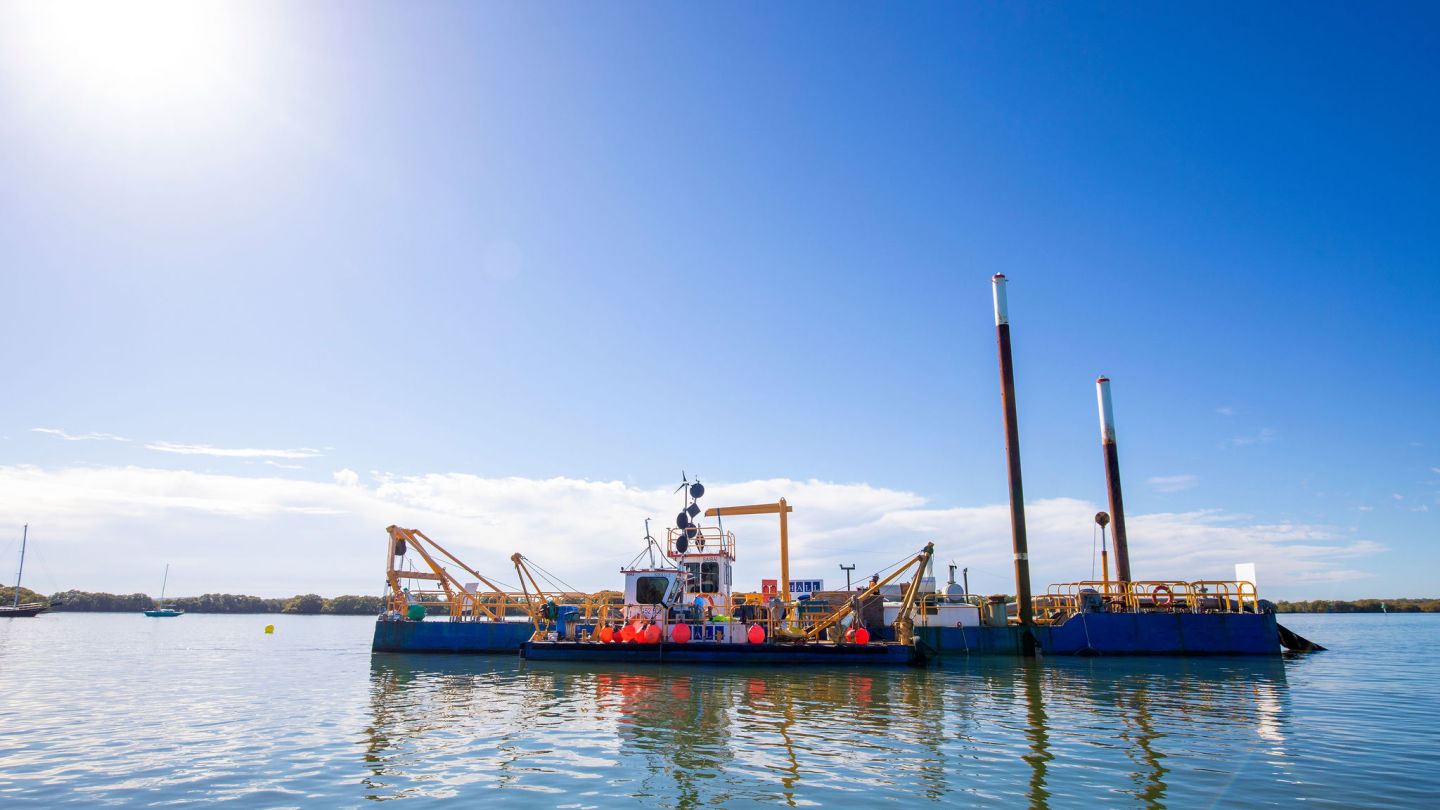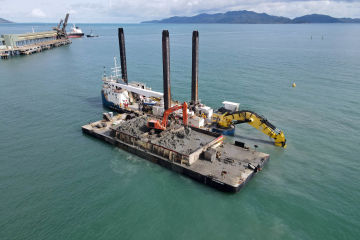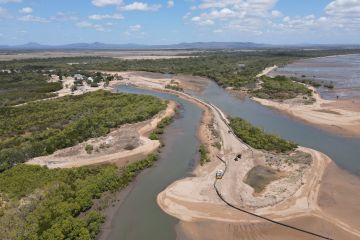Hall General Manager – Dredging Mark McCurdy said the works had improved navigability for recreational and commercial vessels accessing the Moreton Bay Marine Park and Gold Coast Broadwater.
“With sand and other fine material accumulating in the channels as a result of tidal movements, our team was tasked with dredging the shallowest areas to improve accessibility,” Mark said.
“We also focused on eliminating shoaling, which is where surface waves increase in height when entering shallower water, placing boat operators at greater risk of running aground.
“As part of the works, we installed three booster pumps and more than 6km of sunken, land-based and floating pipeline to pump dredged material to the Calypso Bay development, where it will be used to create new residential lots.”
Mark said some of the more challenging aspects of the project included maintaining safe passage for vessels at all times throughout the six-month period of works and contending with tidal flows.
“The currents were consistently strong and increased during periods of heavy rain and flooding on the Gold Coast, so we elected to use one of our more robust cutter suction dredges, Saibai, to carry out the project,” he said.
“Saibai is equipped with a spud that anchors it in place, enabling it to withstand the strong currents.”
Mark said the team had also given careful consideration to protecting the surrounding marine environment throughout the project.
“The area is home to various oyster beds, fish habitats and seagrass meadows, so meticulous planning was undertaken to prevent any negative impact on local marine life.
“Water quality monitoring buoys were installed, which enabled us – in conjunction with water quality monitoring consultants BMT – to track water turbidity levels in real time and prevent any sediment from covering the oyster beds.
“Team members were also trained in marine fauna observation, and they strategically placed pipes, pumps and other equipment in a way that did not disturb the seagrass.
“We’re incredibly proud to have completed the project with no environmental or safety incidents.”
The works were carried out on behalf of Gold Coast Waterways Authority and the Department of Transport and Main Roads, with the project delivered on time and within budget.




